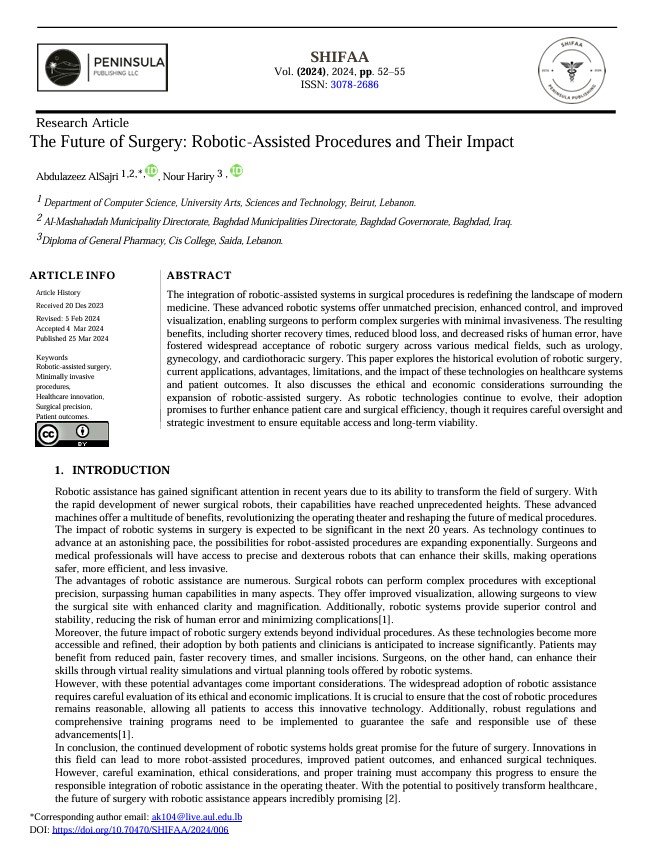The Future of Surgery: Robotic-Assisted Procedures and Their Impact
Main Article Content
Abstract
The integration of robotic-assisted systems in surgical procedures is redefining the landscape of modern medicine. These advanced robotic systems offer unmatched precision, enhanced control, and improved visualization, enabling surgeons to perform complex surgeries with minimal invasiveness. The resulting benefits, including shorter recovery times, reduced blood loss, and decreased risks of human error, have fostered widespread acceptance of robotic surgery across various medical fields, such as urology, gynecology, and cardiothoracic surgery. This paper explores the historical evolution of robotic surgery, current applications, advantages, limitations, and the impact of these technologies on healthcare systems and patient outcomes. It also discusses the ethical and economic considerations surrounding the expansion of robotic-assisted surgery. As robotic technologies continue to evolve, their adoption promises to further enhance patient care and surgical efficiency, though it requires careful oversight and strategic investment to ensure equitable access and long-term viability.
Article Details

This work is licensed under a Creative Commons Attribution 4.0 International License.
